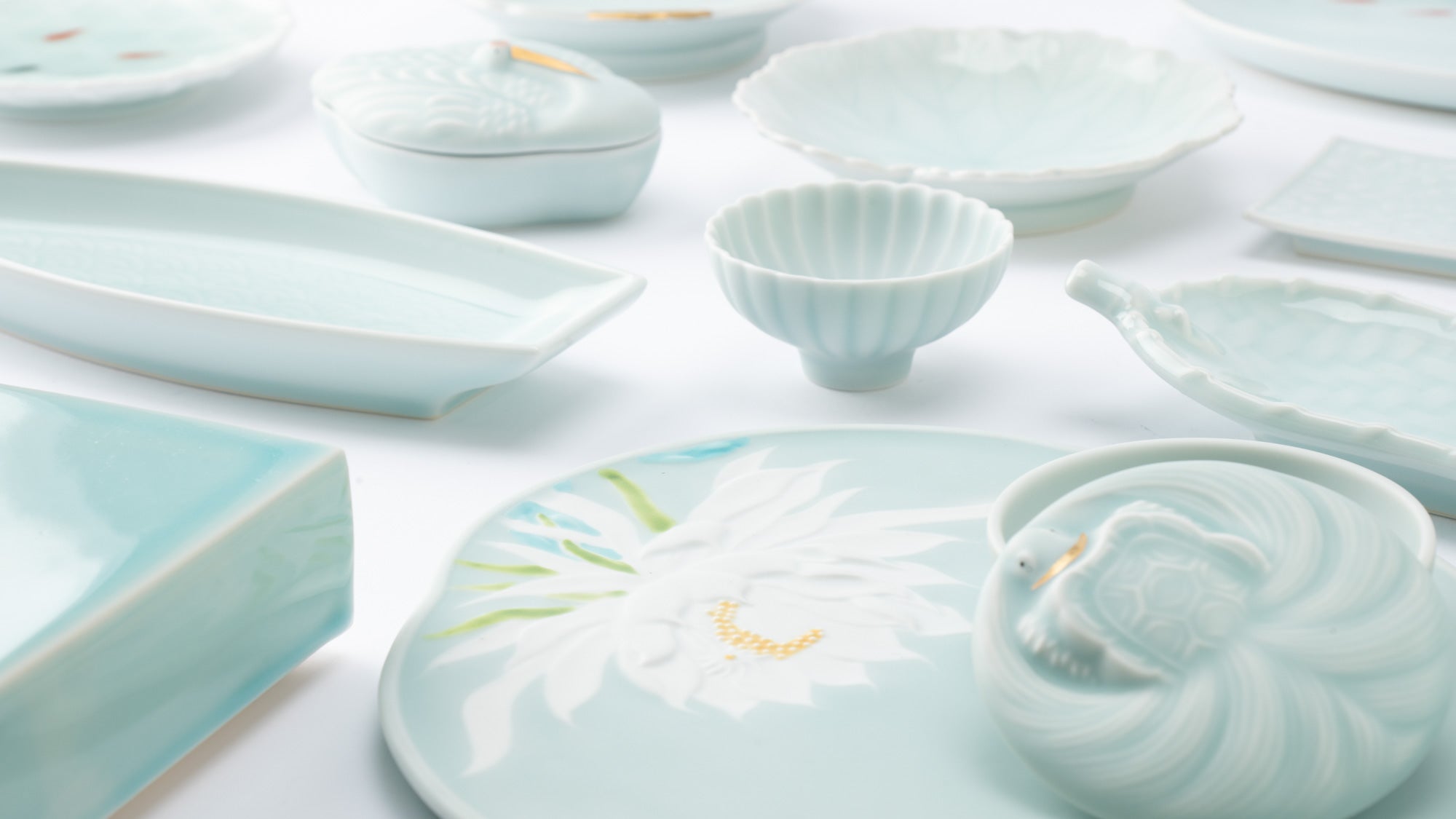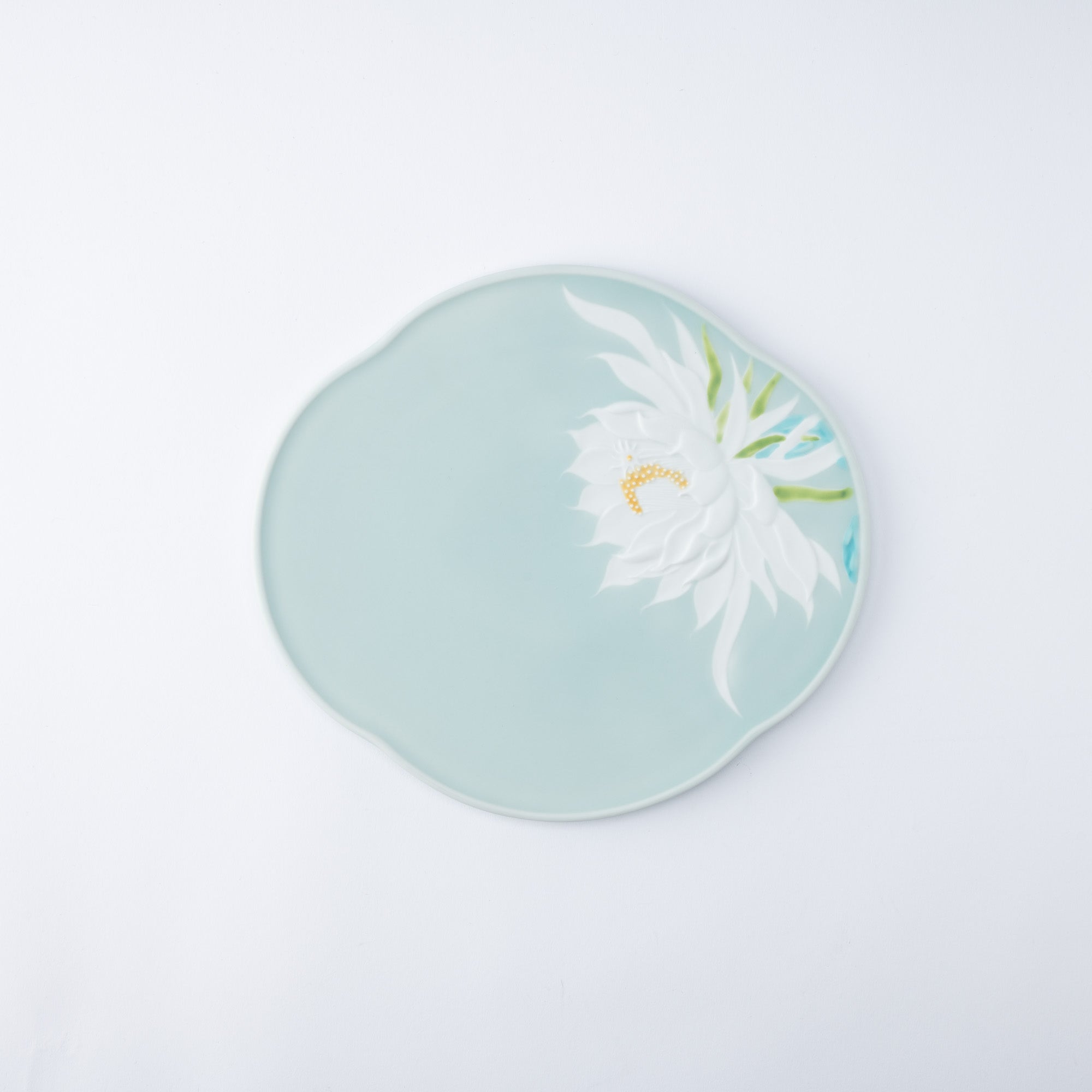
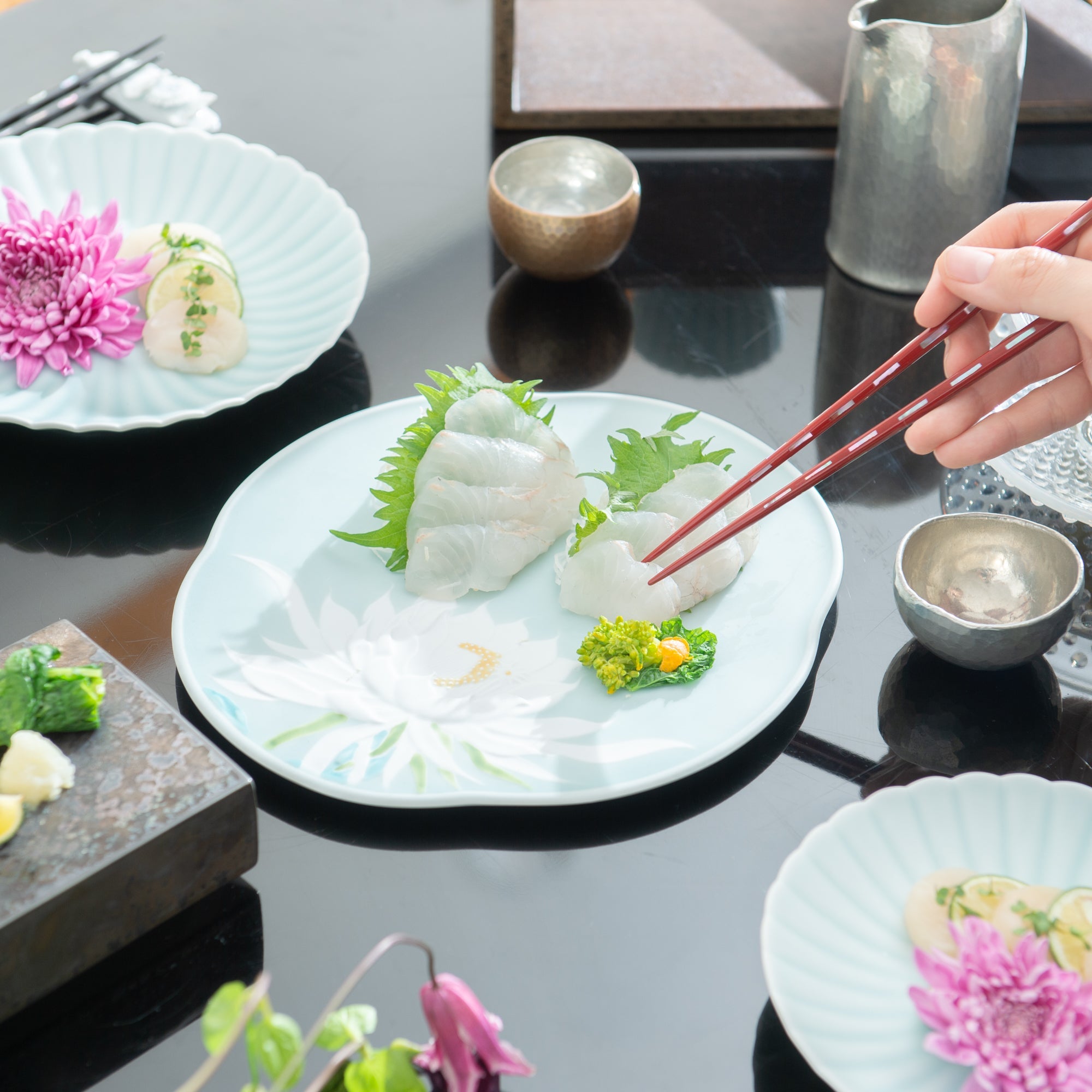
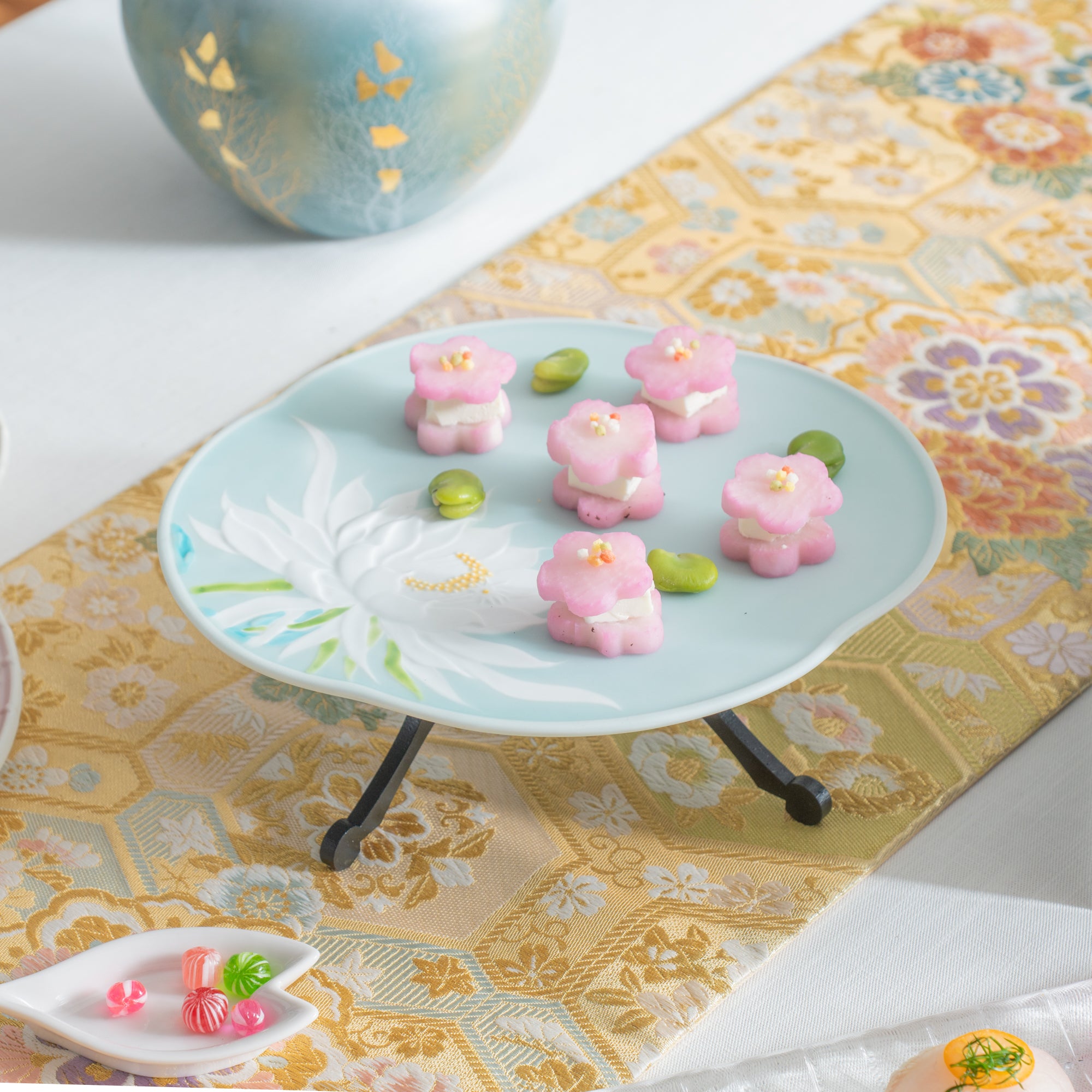
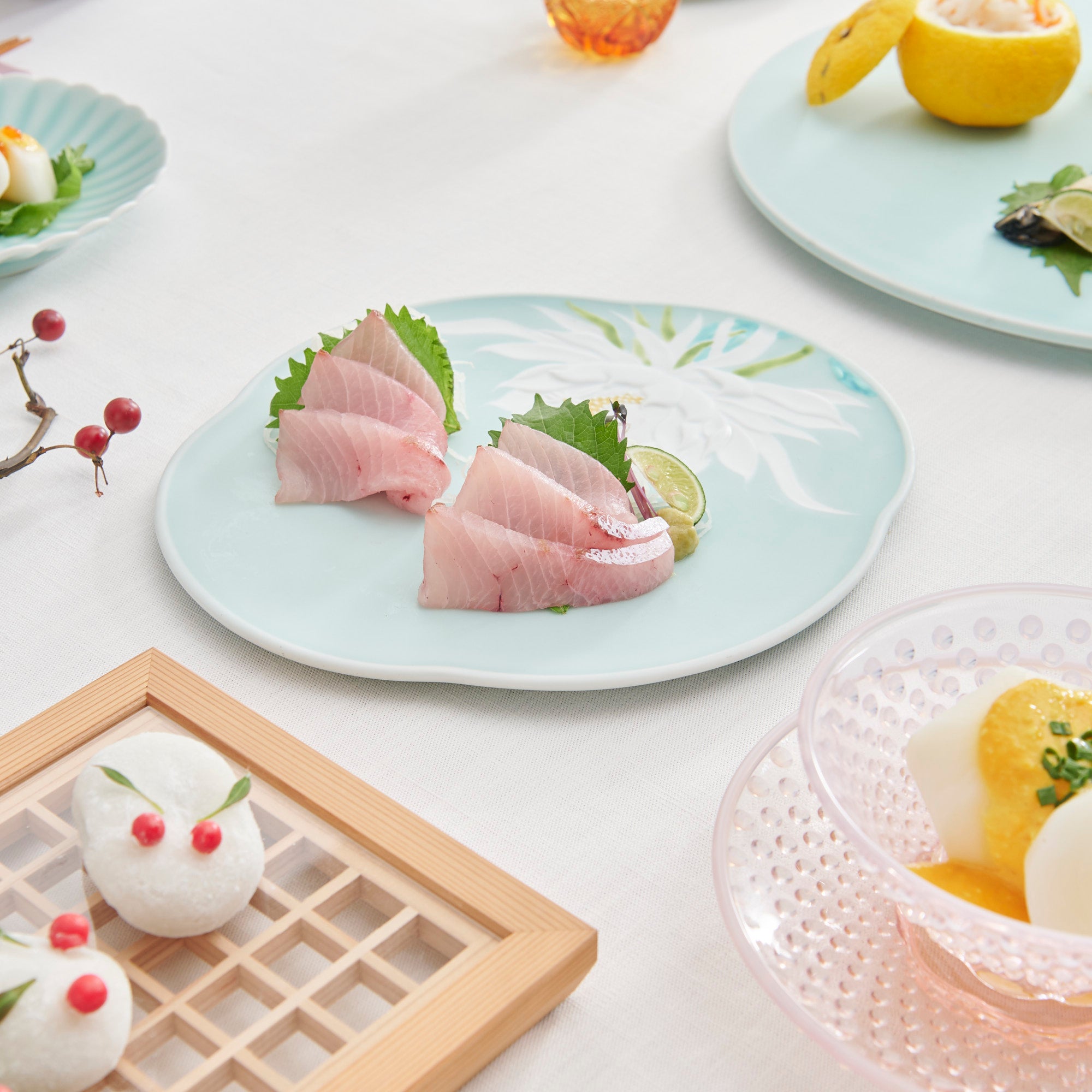
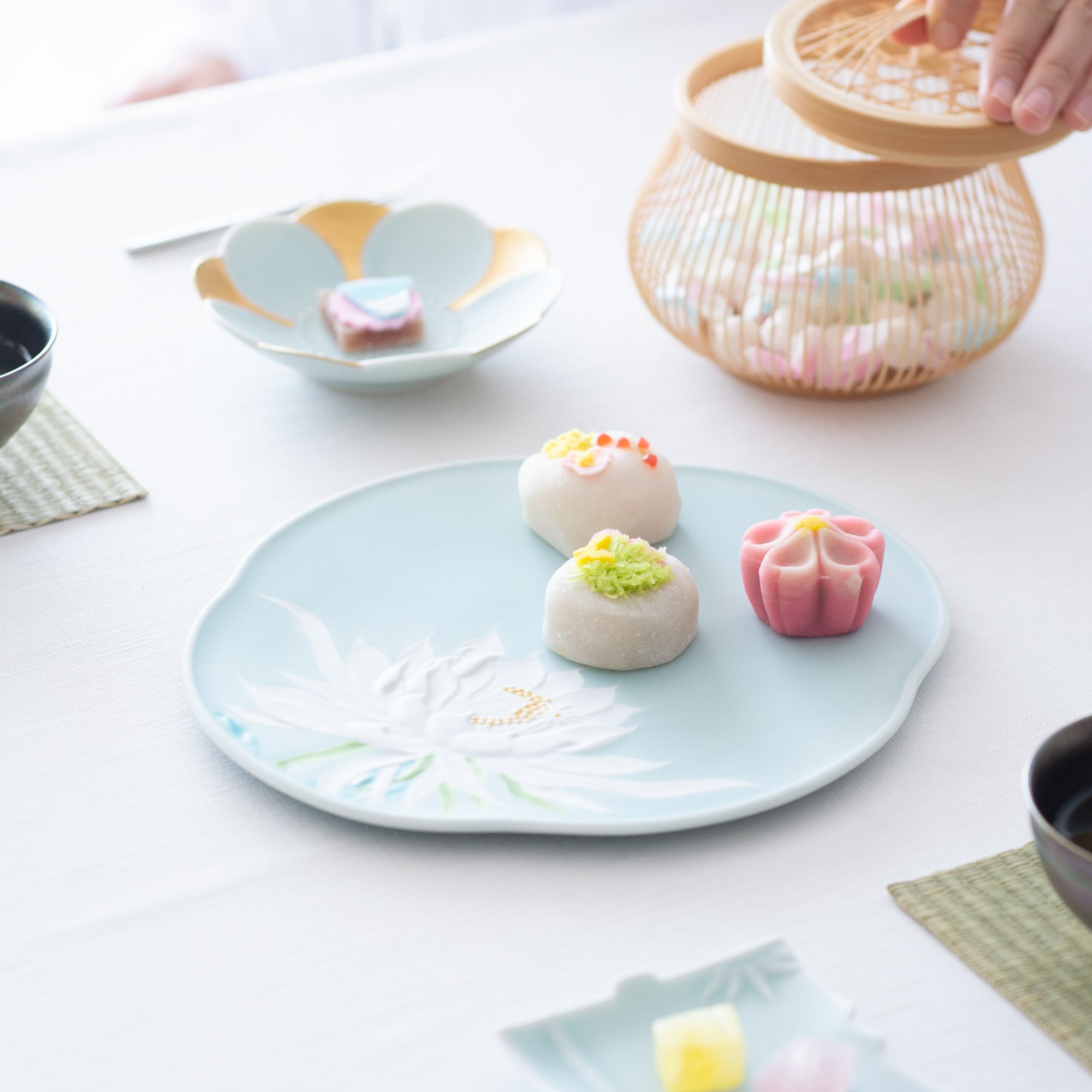
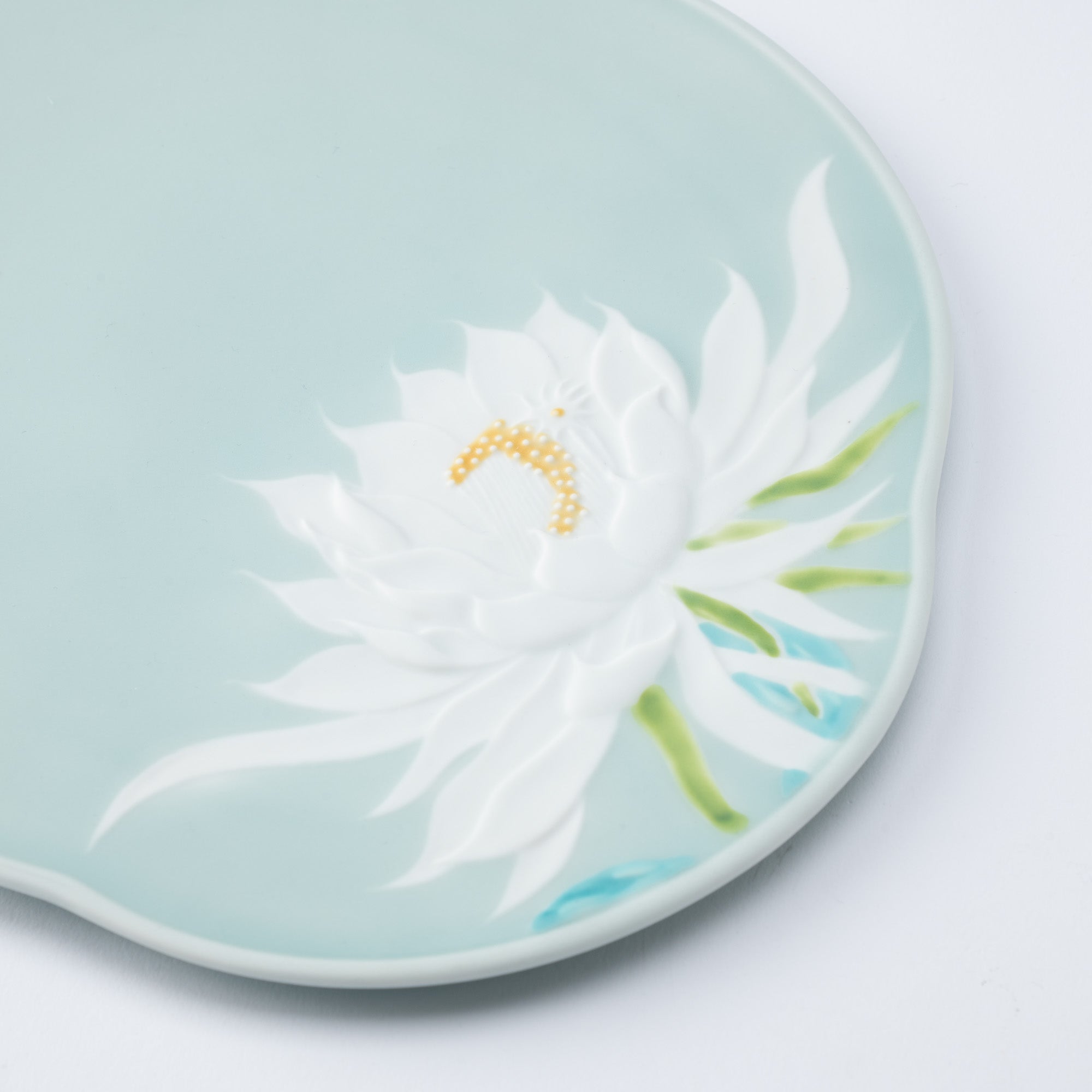
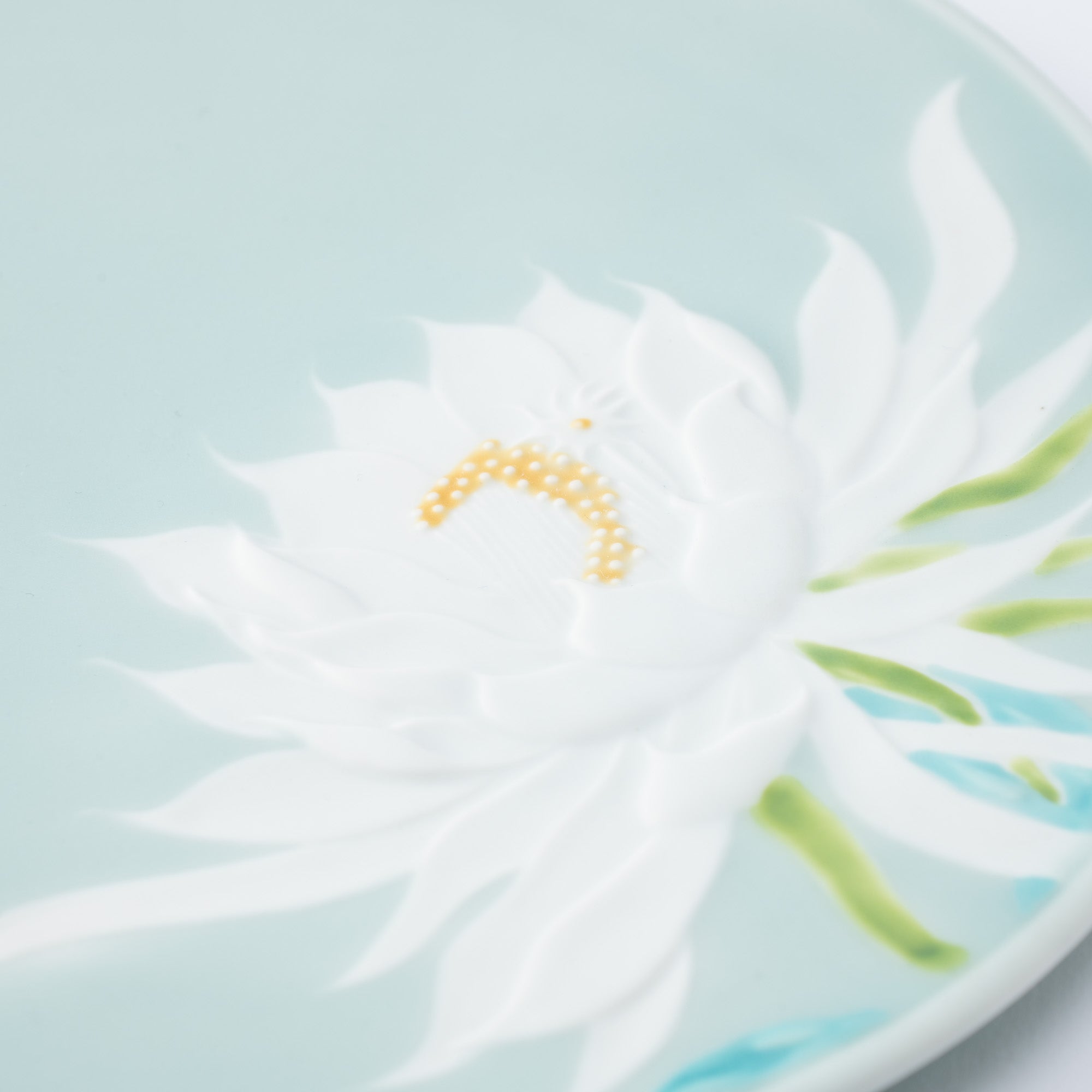
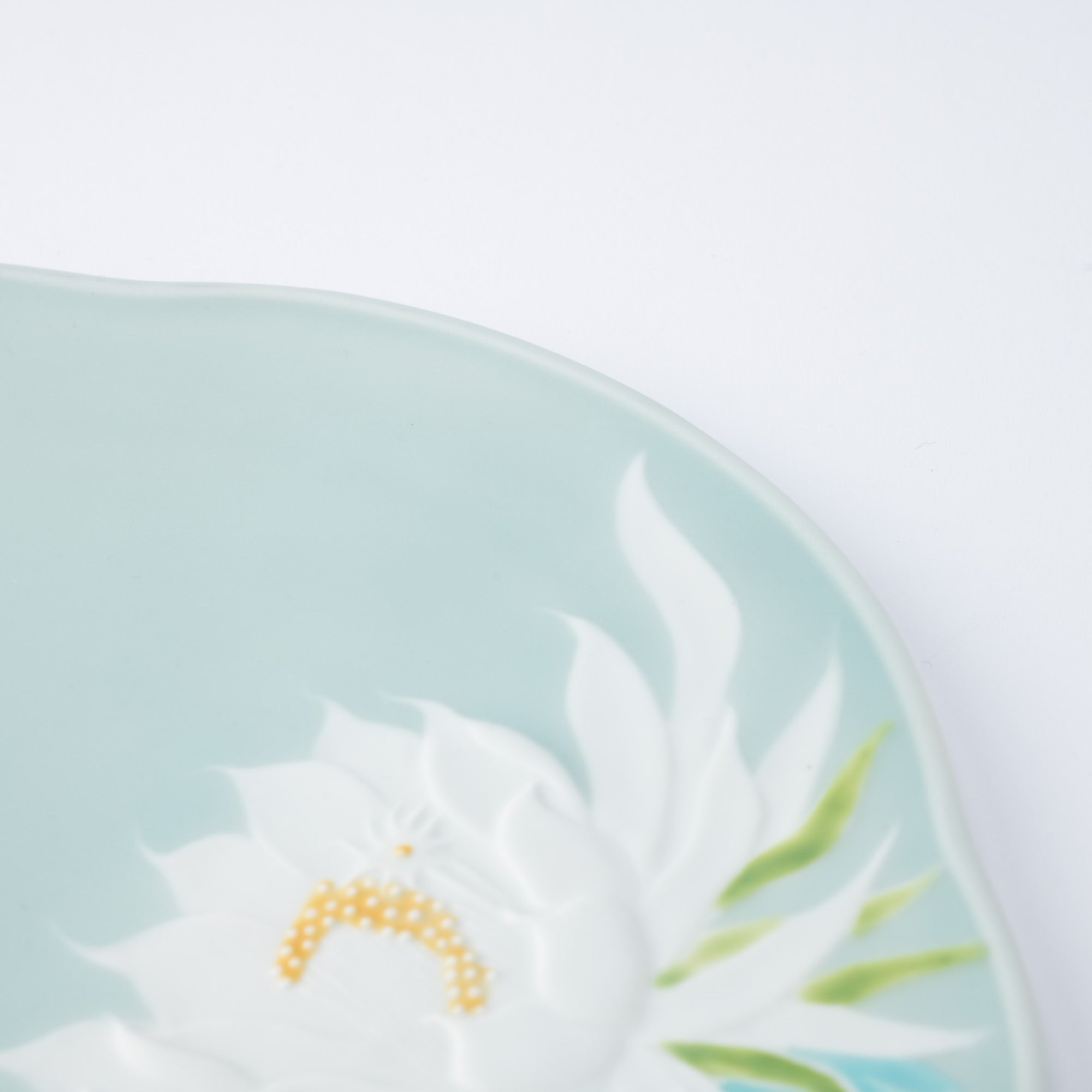
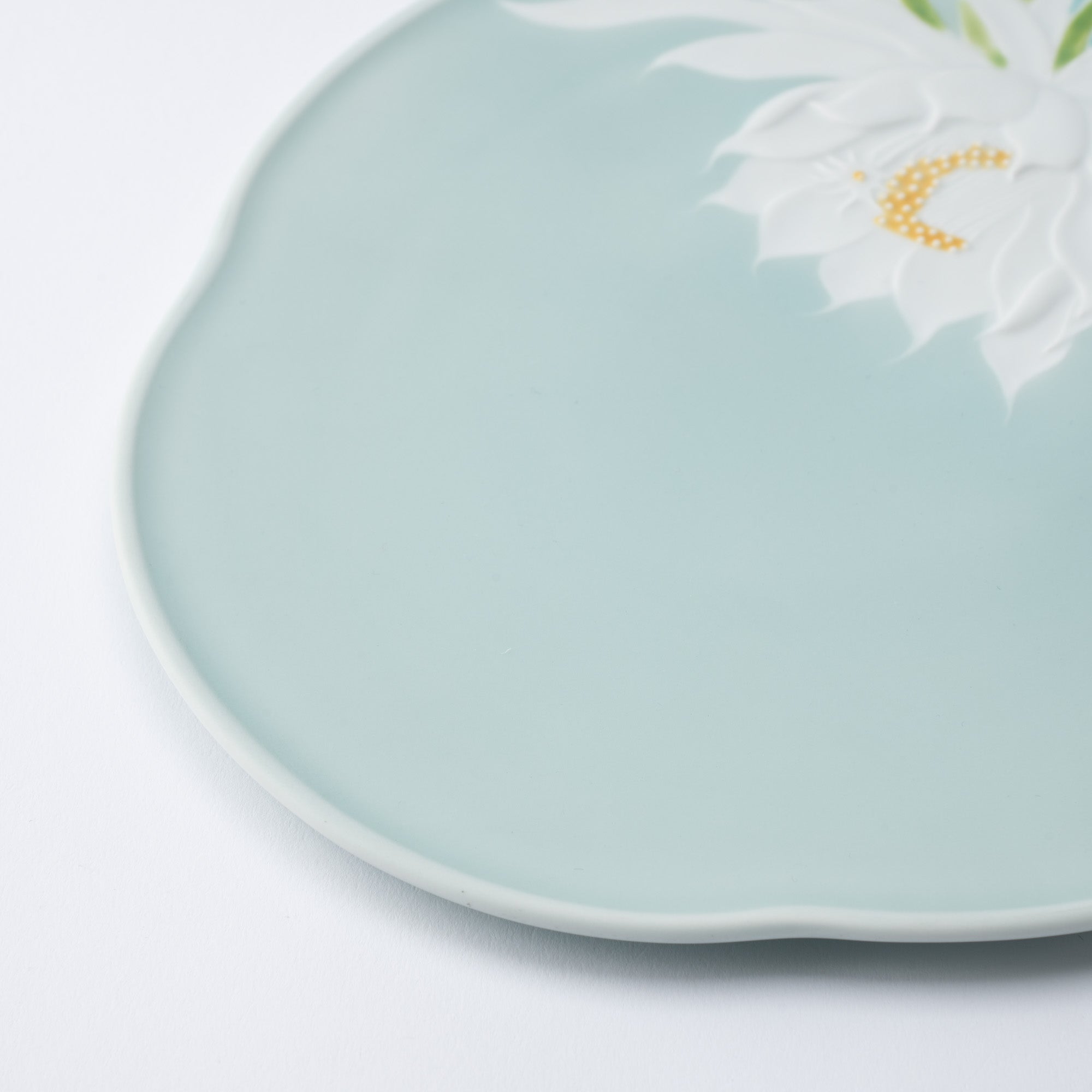
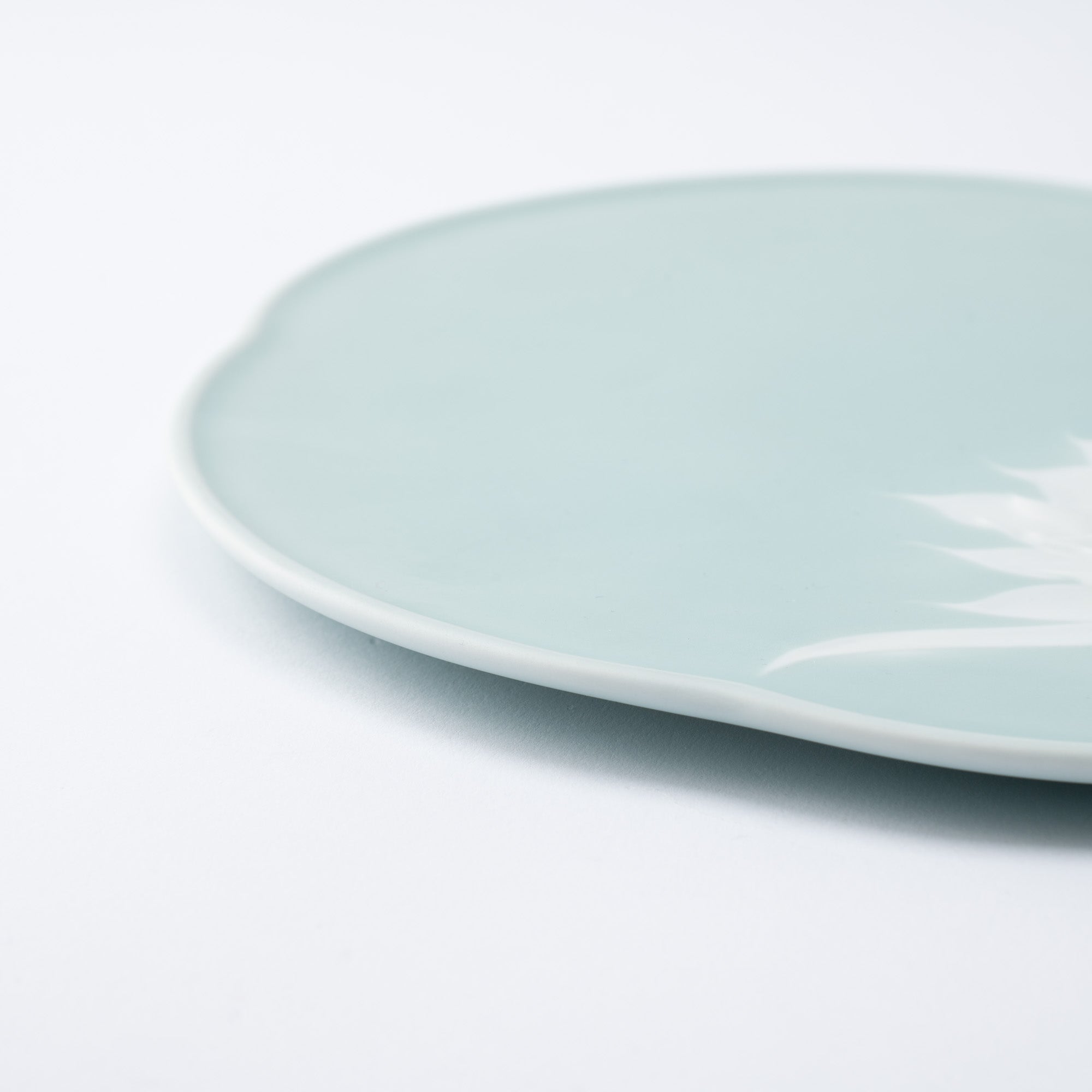
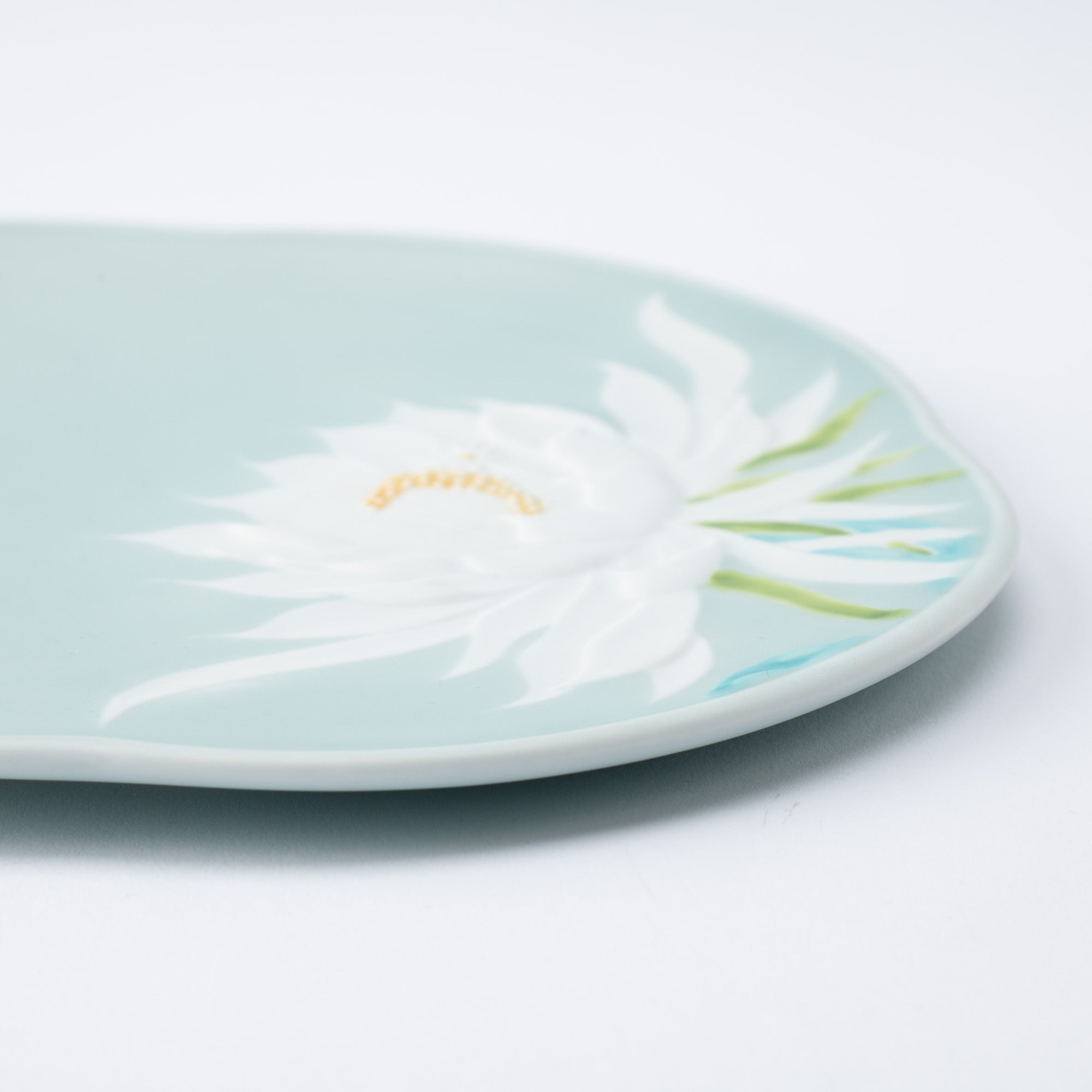
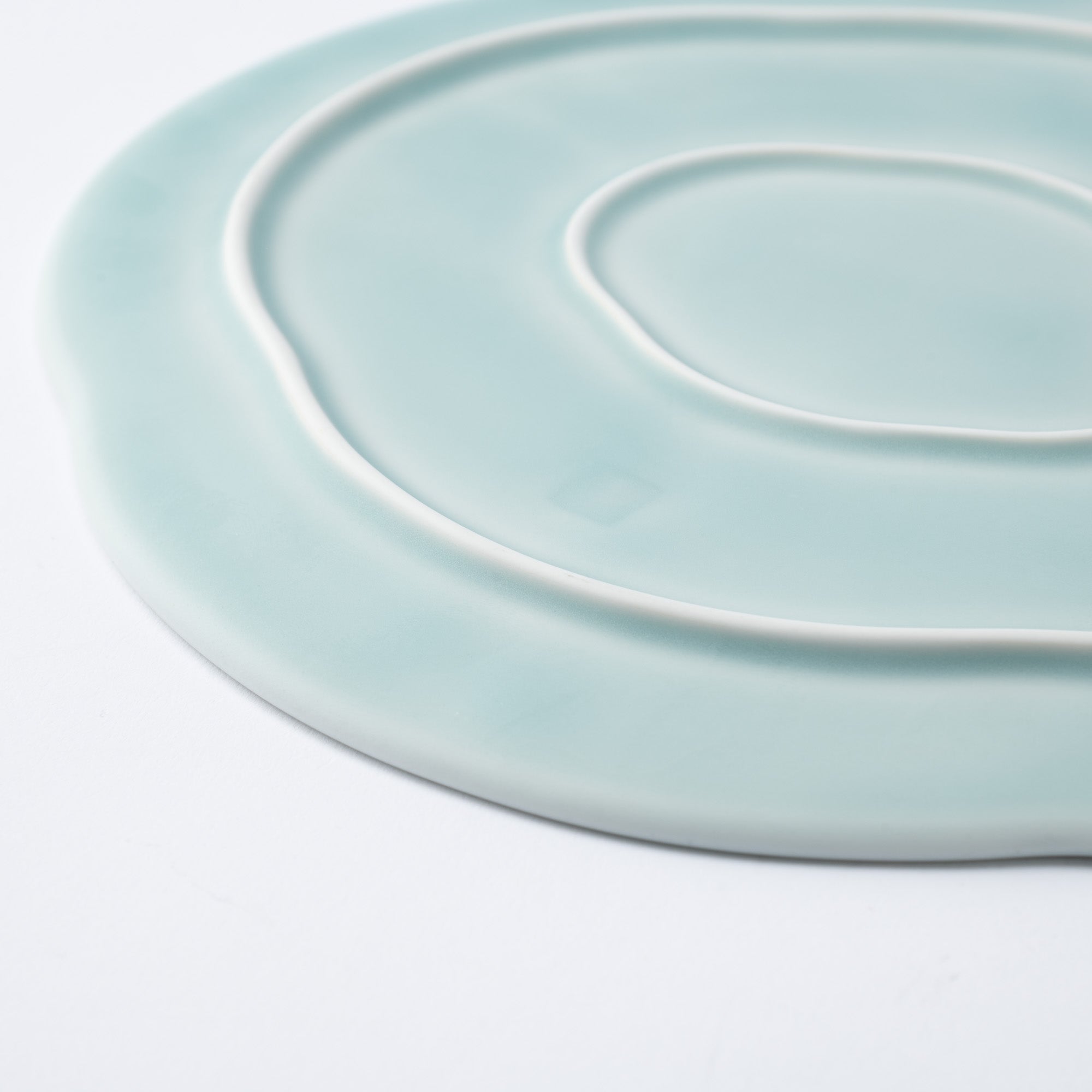

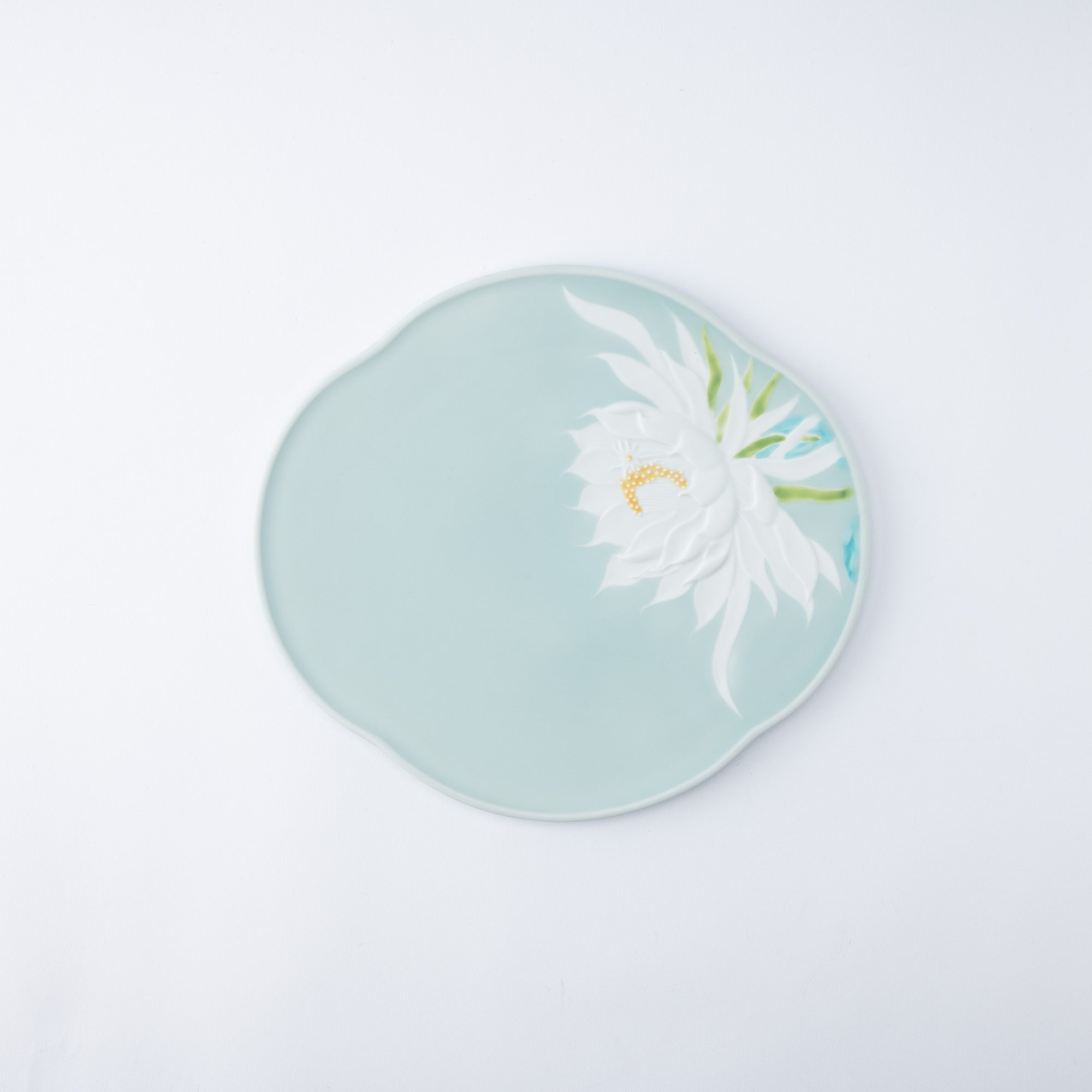
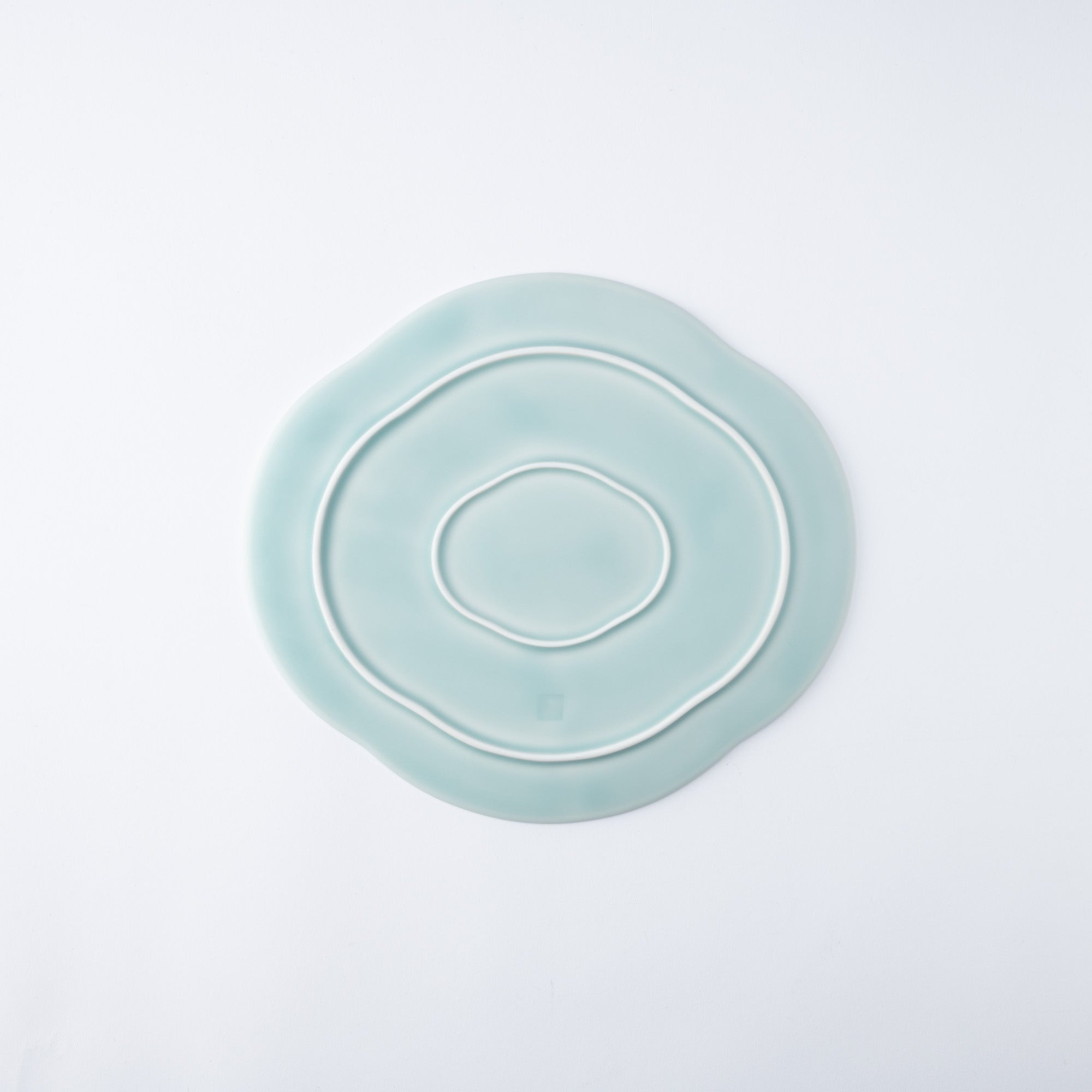
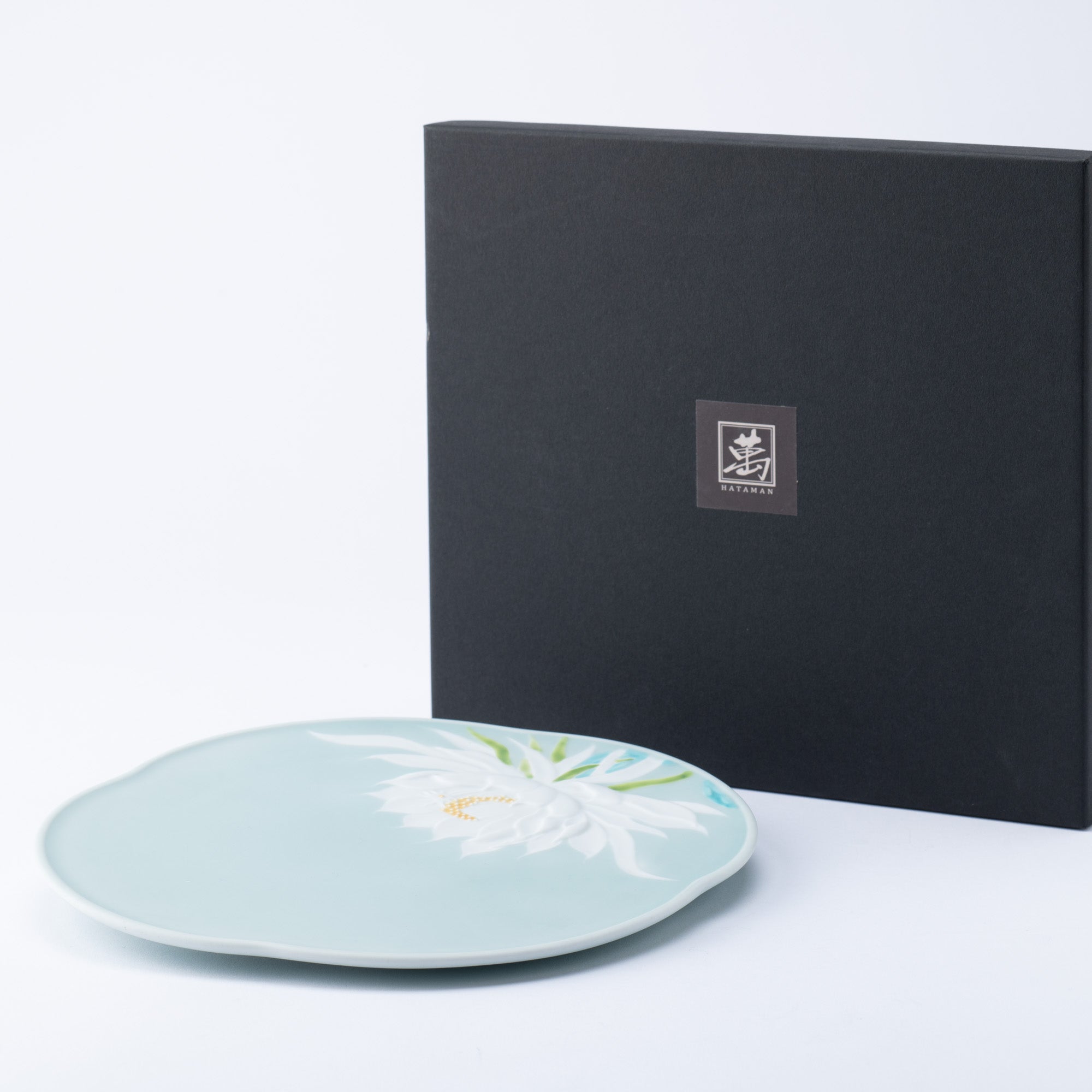
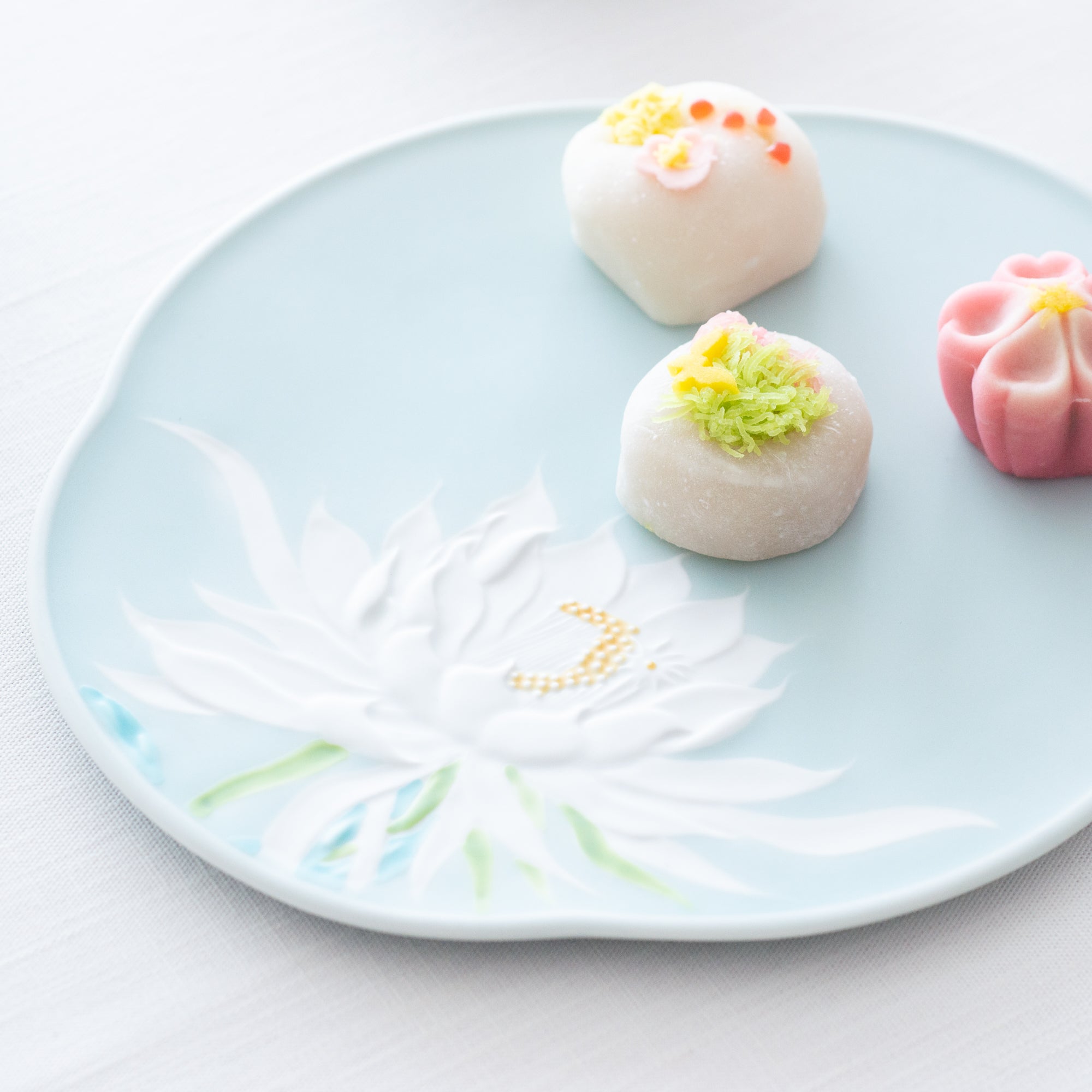
Essteller in Quittenform mit feuchter Orchidee und Kaktus
Estimated Shipping Widget will be displayed here!
Dieser quittenförmige Essteller mit seinen glatten, fließenden Linien zeigt den atemberaubenden Orchideenkaktus, auch bekannt als Epiphyllum. Die anmutige, matte Seladon-Textur dieses Tellers vermittelt beim Berühren Zartheit, verstärkt durch die feuchte und sanfte Oberflächenbeschaffenheit.
Die geschichteten, reinweißen Blütenblätter des Epiphyllums werden auf dem Teller exquisit präsentiert, mit aufwendigen Details der Staubgefäße. Sowohl die Blütenblätter als auch die Staubgefäße sind dreidimensional dargestellt, als würde sich ein echter Orchideenkaktus auf dem Teller entfalten und seine flüchtige Schönheit einfangen. Dieses Design spiegelt meisterhaft den schwer fassbaren Charme der Blume wider, der nur im Schutz der Nacht bewundert werden kann.
Dieser Teller eignet sich perfekt zum Servieren von Sashimi oder anderen Hauptgerichten und vereint künstlerische Eleganz mit Funktionalität, was ihn zu einer auffälligen Ergänzung für jeden gedeckten Tisch macht.
EINZELHEITEN
| Quantity | 1 |
| Size | L 21.3 cm (8.4 in) x W 23.5cm (9.3 in) x H 0.5 cm (0.2in) |
| Material | Porcelain |
| Package Type | Paper box |
| Microwave | No |
| Dishwasher | No |
Hersteller / Marke
Hataman Touen greift die reiche Geschichte und die Techniken der Imari-Nabeshima-Keramik auf, eine 370-jährige Tradition, und verkörpert gleichzeitig den Geist der japanischen Kultur, der Herz und Seele bereichert. Das Unternehmen möchte japanische Ästhetik in einem modernen Kontext verkörpern und seine Geschichte und Produkte mit der Welt teilen.

Kunsthandwerk
Nabeshima-Ware ist eine Porzellanart, die im sorgfältig verwalteten Brennofen der Nabeshima-Domäne hergestellt wird. Dieser Brennofen, ein staatliches Projekt unter der direkten Aufsicht der Saga-Nabeshima-Domäne, erlebte seine Blütezeit in der frühen Edo-Zeit (1603–1868 n. Chr.).
Etwa 250 Jahre lang war Nabeshima-Ware ausschließlich Shogunen und Feudalherren vorbehalten. In den Brennöfen wurden exquisite Stücke in Stilen wie Iro-Nabeshima (Überglasur-Emaille), Ai-Nabeshima (Sometsuke) und Nabeshima seiji (Seladon). Nach dem Ende des Feudalsystems wurden die Brennöfen privatisiert, neue Töpfer wurden aufgenommen und es entstand das, was heute als Imari-Nabeshima-Ware bekannt ist.

Optionen auswählen

















Estimated Shipping Widget will be displayed here!
Teller
Diese Kategorie umfasst Teller mit einem Durchmesser von 21 cm (8,3 Zoll) bis 30,9 cm (12,2 Zoll). Für traditionelle japanische Gerichte sind Teller mit einem Durchmesser von etwa 8 Zoll am praktischsten. Für ein Tellergericht oder Pasta hingegen sind Teller mit einem Durchmesser von etwa 25 cm (10 Zoll) praktischer.
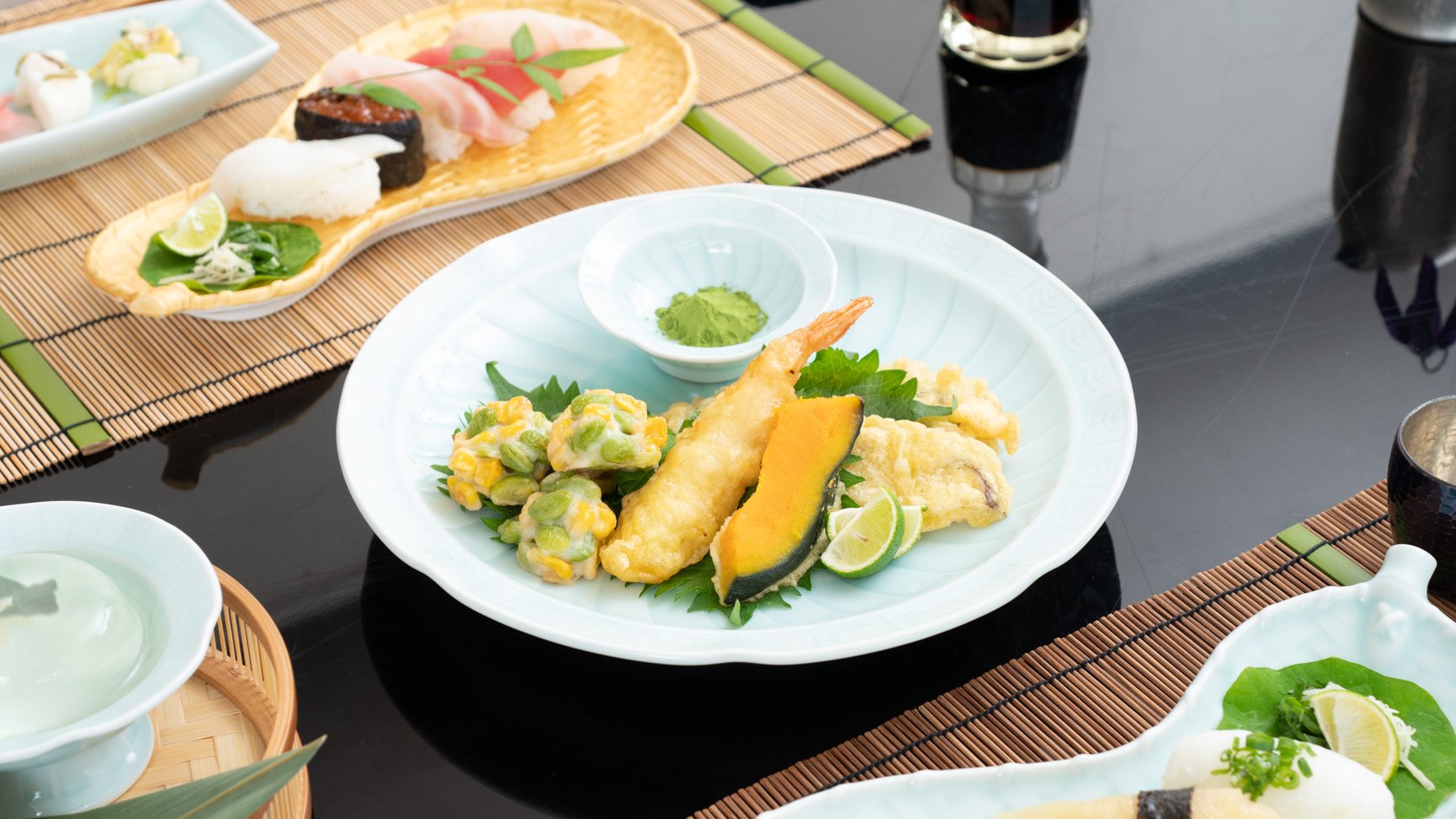
Seladon
Seladonporzellan stammt ursprünglich aus China und wurde im 10. Jahrhundert in Japan eingeführt. Unter den damaligen Adeligen galten Seladonwaren aus China als die edelsten Importwaren. Sie verehrten das geheimnisvolle Blau und nannten es „Geheimfarbe“.
Die Herstellung von Seladon-Geschirr begann in der Region Hizen, dem nordwestlichen Teil des heutigen Kyushu, in der frühen Edo-Zeit (1603 n. Chr. – 1868 n. Chr.). Die Technik wurde später nach Kyoto und Umgebung übertragen. 1957 wurde die Handwerkstechnologie zum nationalen immateriellen Kulturgut erklärt. Seladon wird auch heute noch von vielen Töpfern und Kunsthandwerkern geschätzt und verarbeitet.
